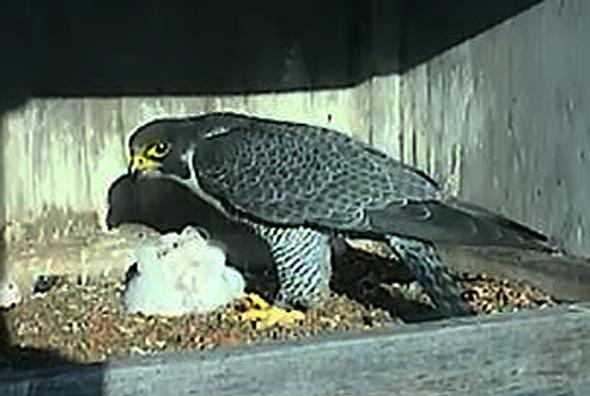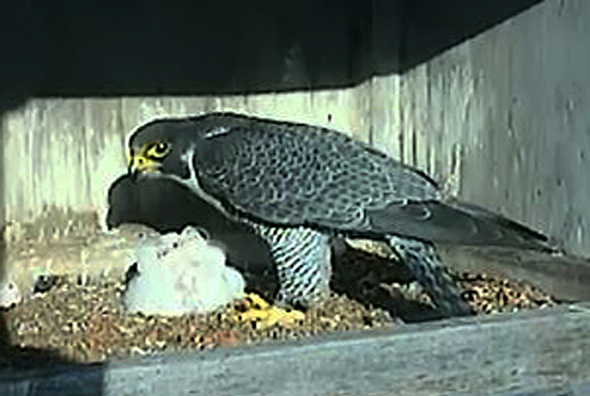
Xplor reconnects kids to nature and helps them find adventure in their own backyard. Free to residents of Missouri.


































Stay in Touch with MDC news, newsletters, events, and manage your subscription

Xplor reconnects kids to nature and helps them find adventure in their own backyard. Free to residents of Missouri.

A monthly publication about conservation in Missouri. Started in 1938, the printed magazine is free to residents of Missouri.


WEST ALTON, Mo.—Five peregrine falcon chicks hatched last week in the nest box mounted at the Ameren Sioux Power Center in St. Charles County. Viewers can watch the parents feed and rear the hatchlings first hand, thanks to the live Falcon Watch webcam feed. Falcon Watch is a partnership between the Missouri Department of Conservation (MDC), Ameren Missouri and the World Bird Sanctuary (WBS).
The Falcon Watch partnership began in 2012 when a peregrine falcon nest box was placed at the Sioux Power Center along the Missouri River. Ameren installed a webcam to allow viewers with internet access to see all nesting activity during daylight hours at https://goo.gl/S3PUVr.
"The female falcon will remain at the nest for the next 10 days to keep the chicks warm and protect them from predators," says Jeff Meshach, deputy director of WBS. "The male falcon will be the sole provider and spend all of his time hunting for prey to feed his new family." The chicks are expected to fledge in five to six weeks.
The eggs were laid between March 14 and 27, and the female spent most of her time incubating them until they hatched. However, the male occasionally assumed those responsibilities to give the mother a chance to rest, preen and eat food the male brought for her.
Over the past five seasons, 19 falcon chicks have successfully hatched and left the nest. This year's adult female is a three-time resident at Sioux Energy Center. She hatched in 2006 in Minnesota. The male hatched in 2004 and was released in New Madrid, Missouri.
Peregrine falcons are considered the fastest animals in the world. The birds have been clocked while diving at 261 mph and it’s estimated their top speeds to be over 280 mph. They are native to the state and commonly live in open country, nesting in cliffs and rocky outcrops. They mostly prey on other birds for food.
Due to effects from pesticide use, the species was brought dangerously close to extinction by the 1970s. They were brought back due largely to captive-breeding programs. WBS re-introduced over 80 birds in the 1980s and 1990s to the St. Louis area. Peregrines take well to urban environments, with an ample supply of pigeons for food and concrete ledges and brick buildings that simulate their natural rocky nesting sites.
To discover more about peregrine falcons, visit https://goo.gl/38zRaj.